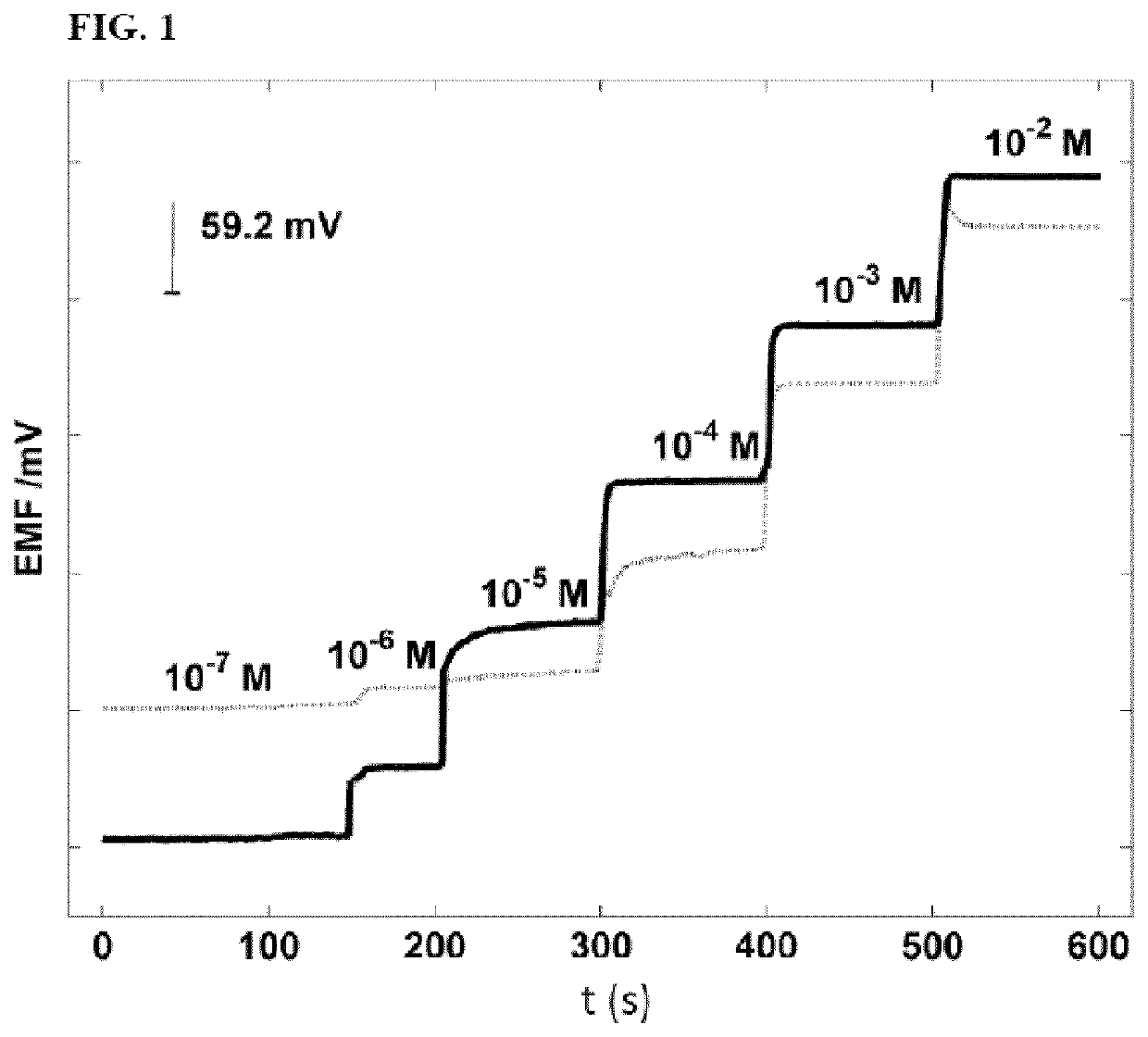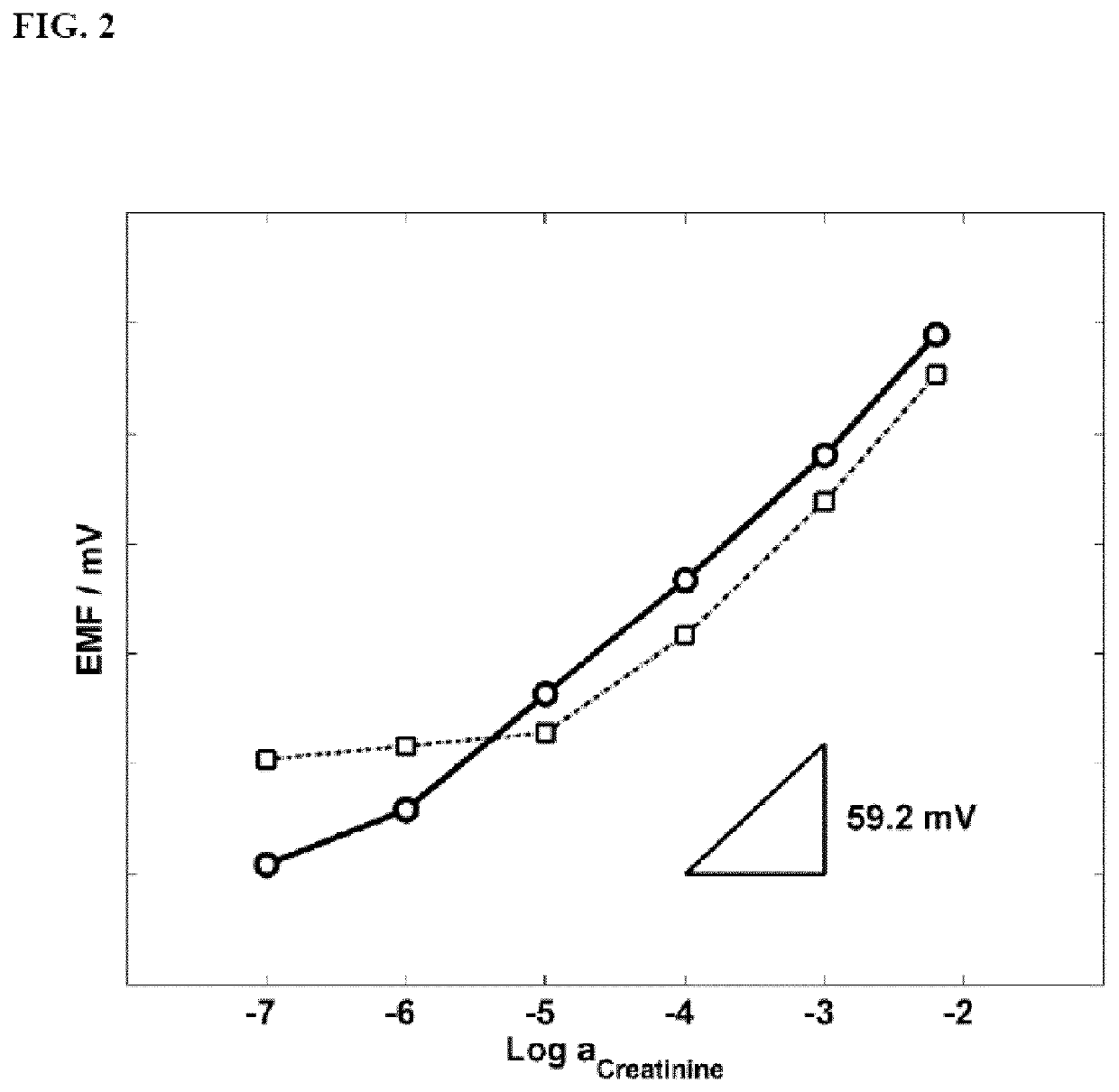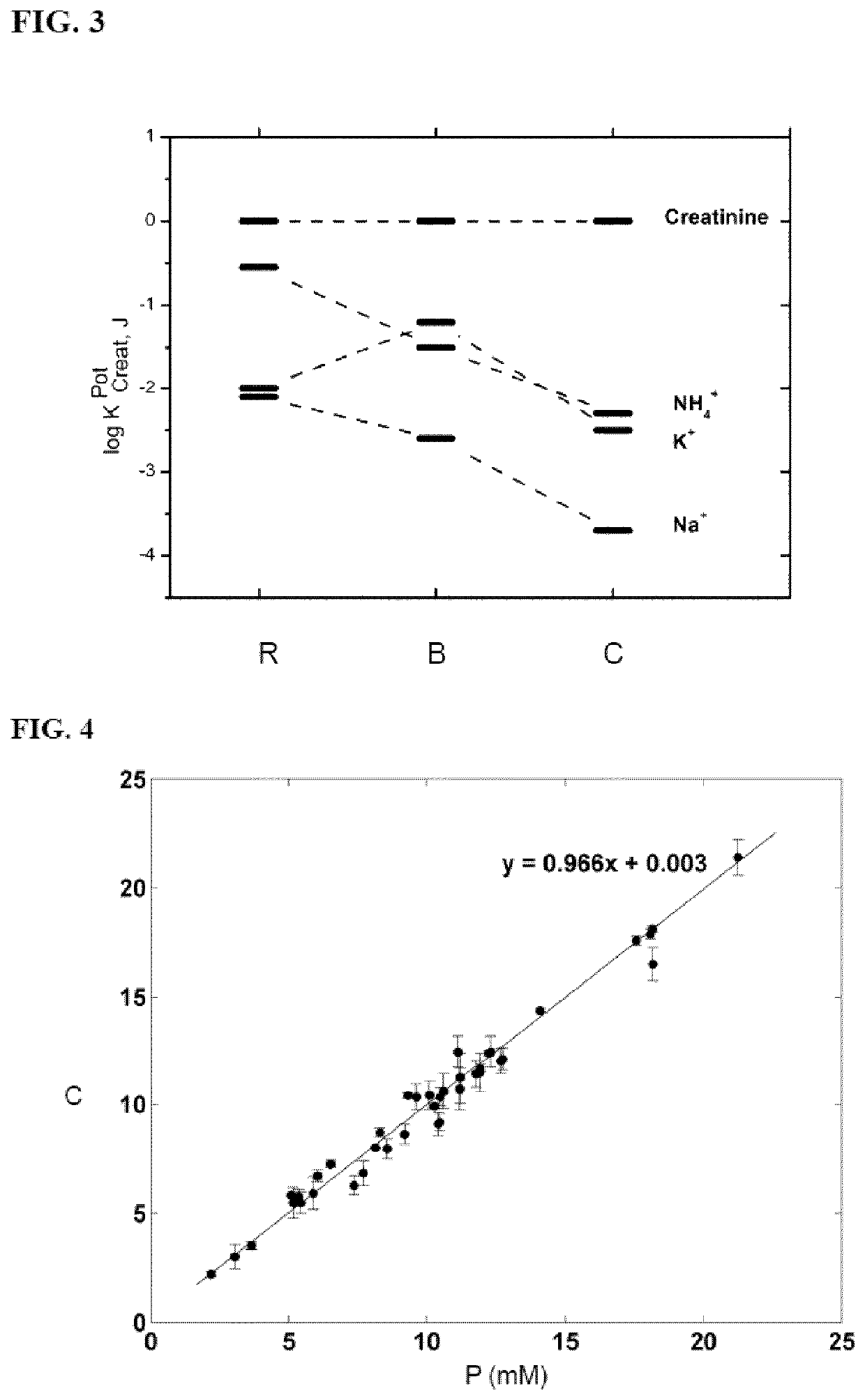Calixpyrrole compounds and creatinine-selective electrodes comprising them
a technology of calixpyrrole and creatinine, applied in the field of analytical chemistry and medicine, can solve the problems of membrane biofouling and inability to be used,
- Summary
- Abstract
- Description
- Claims
- Application Information
AI Technical Summary
Benefits of technology
Problems solved by technology
Method used
Image
Examples
example 1
of Starting Tetrahydroxy Calixpyrrole (VIIA)
[0144]
[0145]Concentrated HCl(aq) (36% by weight, 25.3 mL, 0.3 mol, 10 equiv.) followed by pyrrole (2.2 mL, 31 mmol, 1.05 equiv.) were added to a solution of 1-(3-hydroxyphenyl)ethanone (4.04 g, 1 equiv.) in ethylacetate (300 mL, 0.1 M) under air. The resultant mixture was stirred for 14 hours at room temperature (RT) under air. The reaction mixture was neutralized with saturated NaHCO3(aq) and extracted with CH2Cl2 (3×100 mL). The organic extracts were combined, dried over Na2SO4 and concentrated under vacuum to give a pale brown powder. This powder was purified by column chromatography (silica gel, 1% MeOH in CH2Cl2 to 10% MeOH in CH2Cl2, Rf of product was 0.25 with 5% MeOH in CH2Cl2 eluent). The fractions containing principally the desired product were collected together and evaporated under vacuum to give a white powder. This material was recrystallized from boiling MeCN (200 mL) to give pure product as small colourless cubes, 1.925 g (...
example 2
of Starting Octahydroxy Calixpyrrole (VIIb)
[0148]
[0149]Methanesulfonic acid (0.24 mL, 10.77 mmol, 3 equiv.) was added dropwise to a solution of pyrrole (0.25 mL, 3.6 mmol, 1 equiv.) in MeOH (6 mL). The mixture was stirred for 5 min and then a solution of dodecyl-(3′,5′)dihydroxyphenyl ketone (X) (1.1 g, 3.6 mmol, 1 equiv.) in MeOH (18 mL) was added slowly. The reaction was stirred 20 h at RT. The reaction mixture was diluted with water (30 mL) and extracted with ethyl acetate (4×50 mL). The organic layers were combined, dried over sodium sulphate, and concentrated under vacuum. The material was purified by chromatography (silica gel; dichloromethane / ethyl acetate-8:2→6:4) affording a brownish solid that was recrystallized from acetonitrile to give the pure product, 245 mg (19% yield).
[0150]Starting Octahydroxy Calixpyrrole (VIIb)
[0151]1H NMR (500 MHz, MEOD, 25° C.): δ 8.89 (bs, 4H), 6.18 (d, J=2.0, 8H), 6.15 (t, J=2.0, 4H), 5.89 (d, J=2.4, 8H), 2.30 (m, 8H), 1.35 (m, 80H), 0.89 (t, ...
example 3
of Single Carbon-Bridge Calixpyrrole (Type I)
[0152]
[0153]Starting tetrahydroxy calixpyrrole (VIIA) (41 mg, 55 μmol, 1 equiv.) and K2CO3 (16 mg, 112 μmol, 2 molar equiv.) were added to a sealable tube. This tube was placed under vacuum for 10 hours to remove as much water as possible from the reagents. The sealed tube was purged with Argon three times. Dimethyl sulfoxide (DMSO) (5.3 mL, 10 mM) was added followed by bromochloromethane (3.6 μL, 55 μmol, 1 equiv.) and the tube was sealed. The turbid reaction mixture was placed in an oil bath set to 100° C. and stirred for 1 hour. The reaction mixture was cooled, the sealed tube was opened and the mixture was brought to ≈pH 2 with 1M HCl(aq). The resultant mixture was extracted with CH2Cl2 (2×10 mL). The combined organic extracts were washed with water, dried over Na2SO4, and evaporated to give a light beige powder. This material was purified by column chromatography (silica gel, 1% MeOH in CH2Cl2 to 10% MeOH in CH2Cl2, Rf of product is ...
PUM
| Property | Measurement | Unit |
|---|---|---|
| weight ratio | aaaaa | aaaaa |
| pH | aaaaa | aaaaa |
| pH | aaaaa | aaaaa |
Abstract
Description
Claims
Application Information
 Login to View More
Login to View More - R&D
- Intellectual Property
- Life Sciences
- Materials
- Tech Scout
- Unparalleled Data Quality
- Higher Quality Content
- 60% Fewer Hallucinations
Browse by: Latest US Patents, China's latest patents, Technical Efficacy Thesaurus, Application Domain, Technology Topic, Popular Technical Reports.
© 2025 PatSnap. All rights reserved.Legal|Privacy policy|Modern Slavery Act Transparency Statement|Sitemap|About US| Contact US: help@patsnap.com



